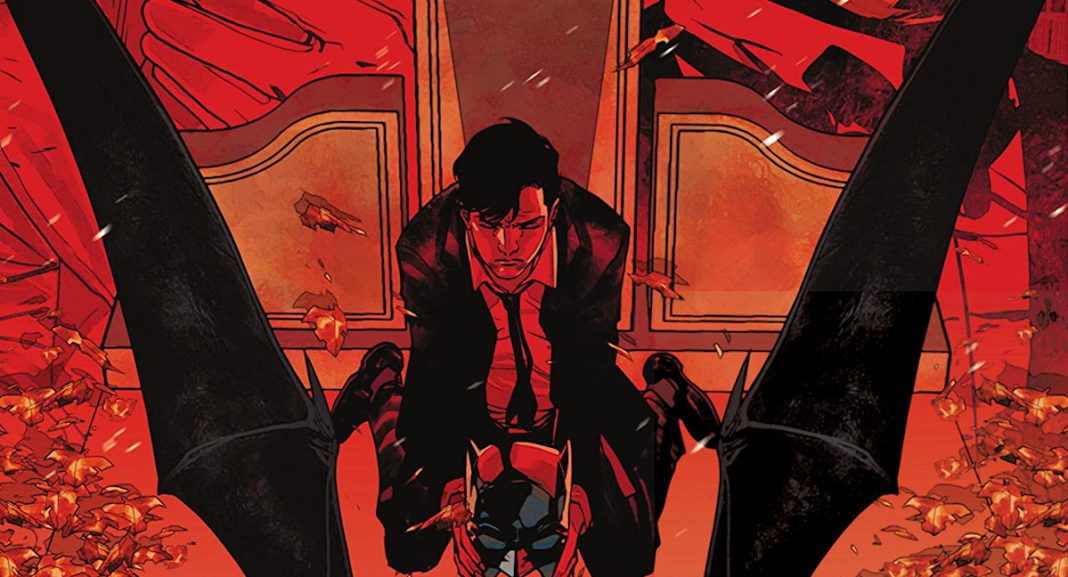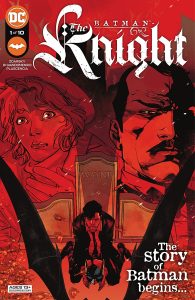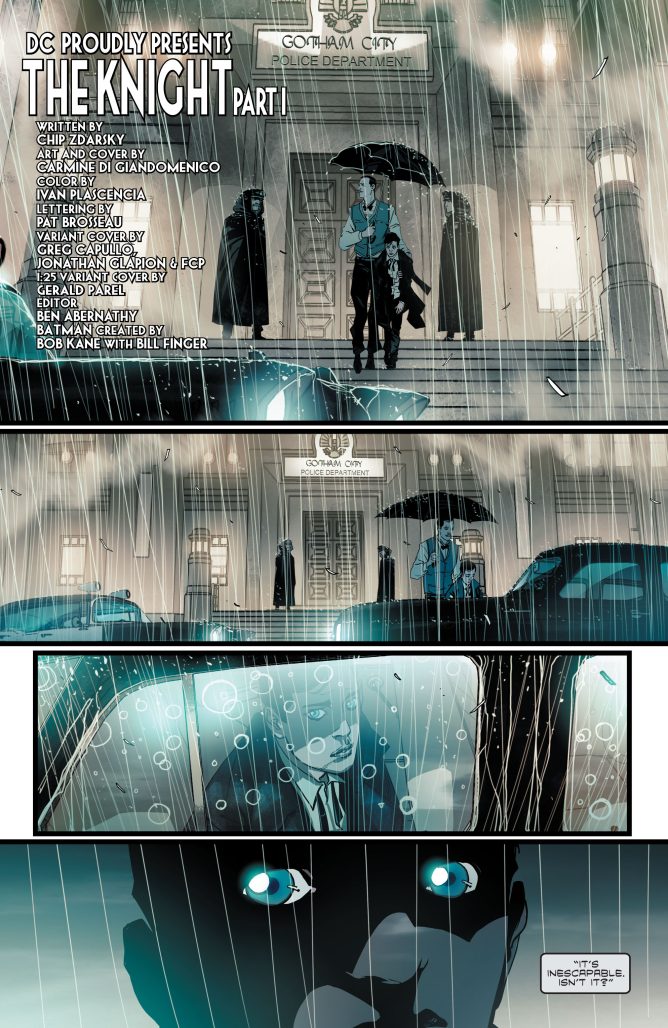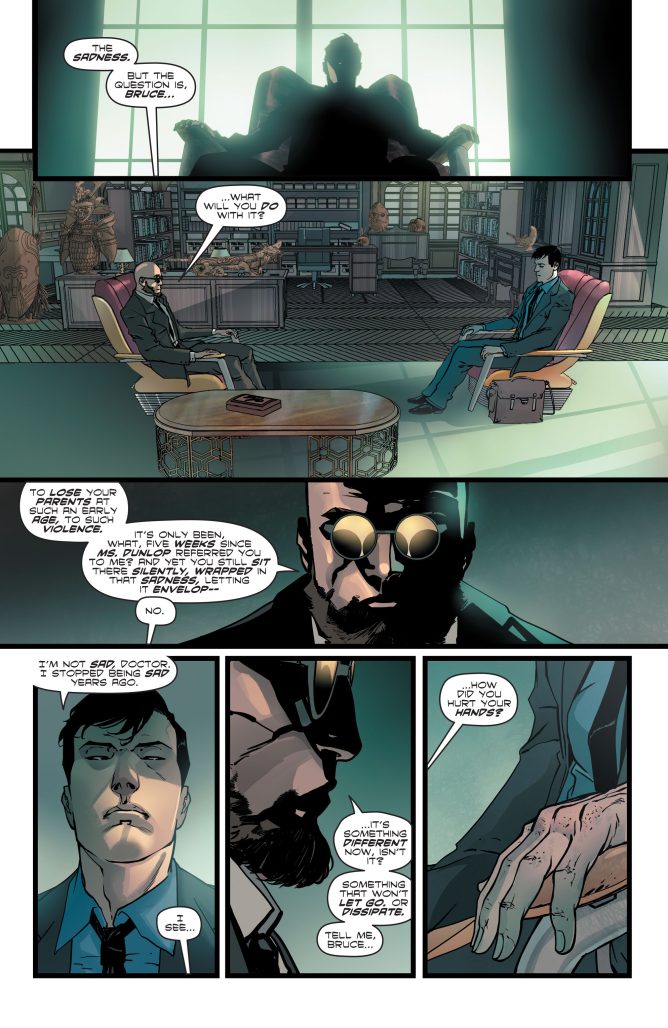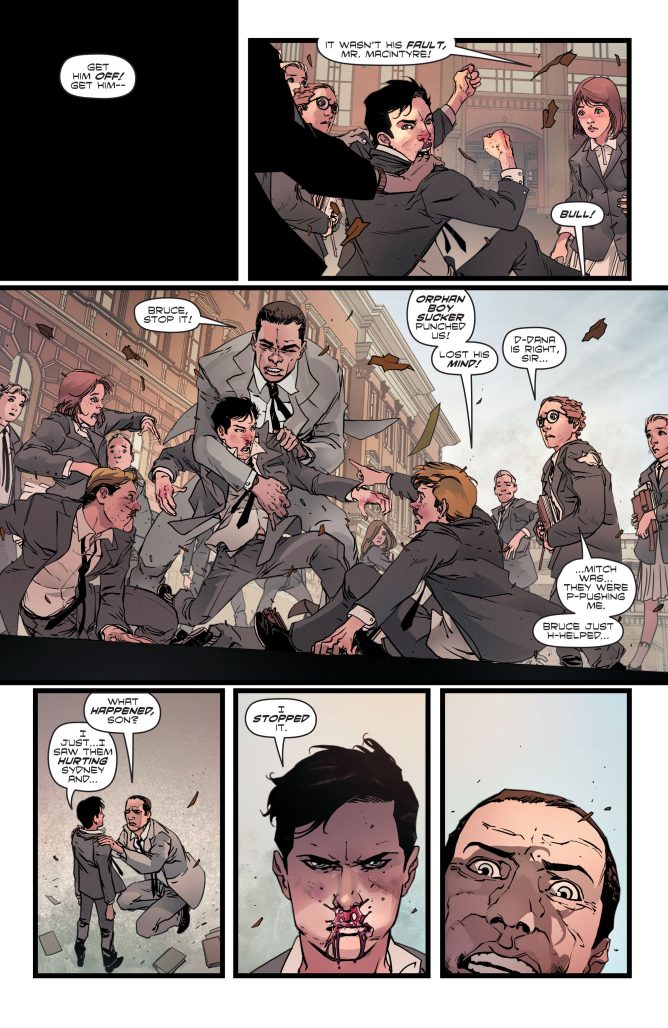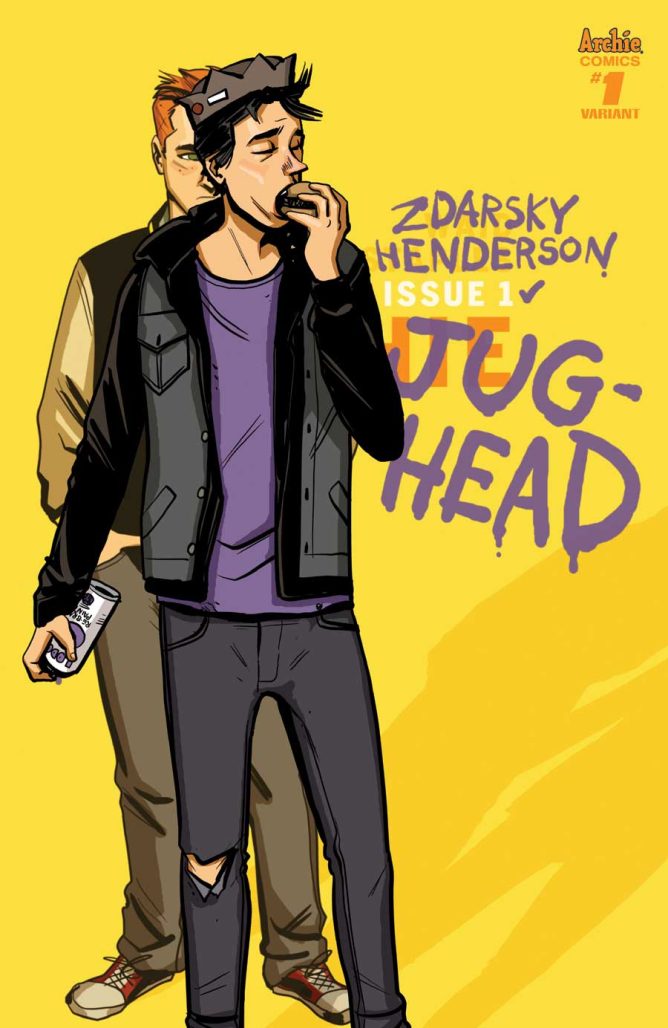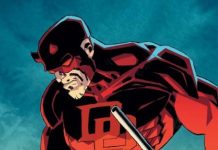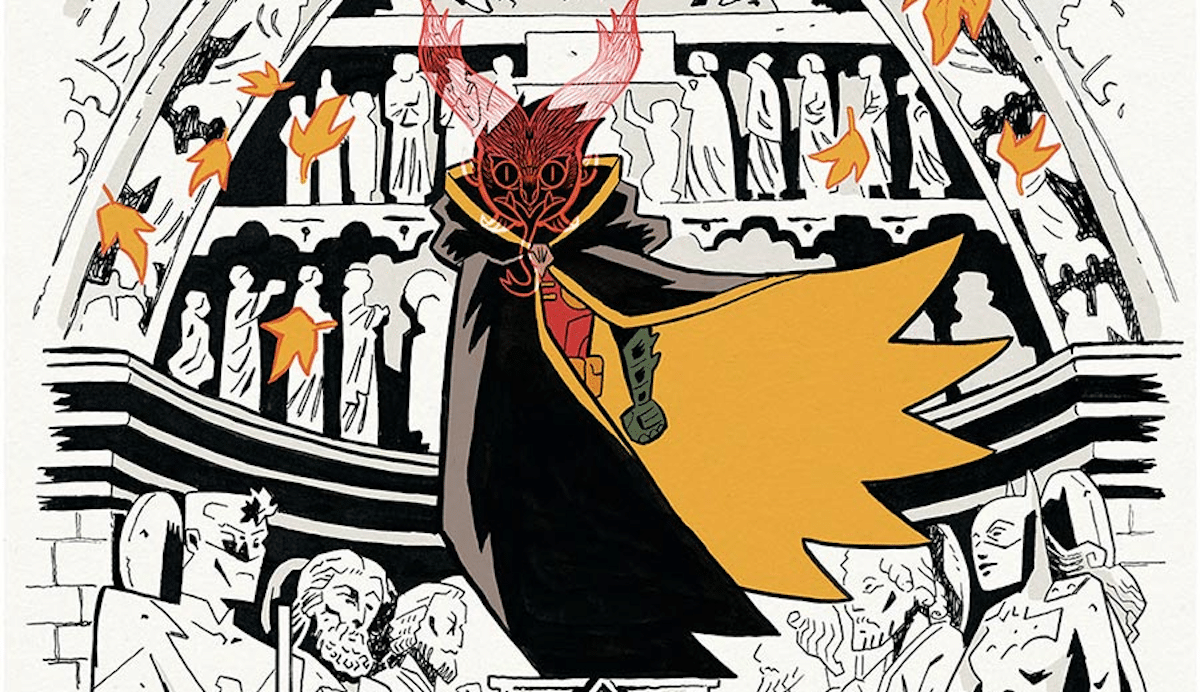Of all the superhero origins in comics, Batman’s may be the most well-known and often-explored. The emotional and psychological toll that witnessing the murder of his parents before his eyes at the age of 8 took on Bruce Wayne is fertile ground for analysis, though, and this week DC Comics debuted a new series set to explore Bruce’s ‘in-between’ years. Batman: The Knight dives into the years between the Wayne murder and Bruce taking on the mantle of Batman. The ten-issue series is written by Chip Zdarsky, illustrated by Carmine Di Giandomenico and Ivan Plascencia, and lettered by Pat Brosseau.
The miniseries is a return to Batman for Zdarsky, who previously penned a six-part Batman & Red Hood storyline in the pages of the anthology series Batman: Urban Legends. The Beat spoke with Zdarsky via email about his work on Batman: The Knight, the differences in writing modern day Batman and a young Bruce Wayne, and whether there’s room for humor in a Batman story.
Joe Grunenwald: You’ve written Batman before in the pages of Urban Legends, though the Bruce Wayne in The Knight is at a very different place in his life. How, if at all, has your approach to the character changed between the two series? Are there core things you feel like you have to get right?
Chip Zdarsky: Yeah, they’re quite different. Even what drives them is slightly different. Bruce, pre-Batman, is driven by a thirst for vengeance and justice. There’s an anger there that current day Batman doesn’t quite have now that he knows so much more about the world and his role in it. Batman has anger, but it’s not as much his fuel as it was in his early days. Doing right, bringing justice, those are what complements his anger now. A young Bruce might say those are what drives him, but he needs some growing up before that’s true.
Grunenwald: You’ve mentioned in a previous interview that part of this series is about Bruce’s “youthful hubris.” Can you elaborate on that, and the role that you see Bruce’s ego playing in his becoming – and continuing to be – Batman?
Zdarsky: Yeah, it’s an insane idea for a teenager to think they can become the best at everything in the world and dedicate a life to stopping crime in some non-law enforcement capacity! You kind of have to be young to think that’s possible before life beats it out of you.
A lot of this story is figuring out how someone goes from point A to point B, how a kid can make that kind of decision, but no idea what the final form is, and how to really get there.
Grunenwald: In the last installment of your newsletter for 2021, you wrote: “If I ever wrote Batman I’d be, like, take those dumb trunks off and then I’d be, like, hey take those pants off too while you’re at it stud”. Can you elaborate on that as well?
Zdarsky: You know damn well what I mean!!!!
Grunenwald: There are moments in the first issue where young Bruce is legitimately frightening in a way I feel like we’ve never seen before. It’s easy to see where he could’ve gone in a very different direction from ‘costumed crimefighter.’ What interests you about the darkness within Bruce Wayne?
Zdarsky: I mean, it’s what makes Batman so cool! He’s dark and tortured (for the most part)! Getting to write the world’s smartest, most capable man who has such a deep trauma at the heart of him is actually really fun. I’ve never had a chance to write the playboy-facade Bruce Wayne, but that as a counter-balance just must be incredibly satisfying to write.
Grunenwald: I particularly appreciated the way the first issue plays with time, flashing back and jumping forward in really interesting ways. In a way it’s used as a reflection of Bruce’s psyche. Is that technique something we should expect more of as the series progresses?
Zdarsky: I’m glad you liked it! Once he’s on his travels we stay pretty linear and focused, just like Bruce is at that point. But issue one felt like things should seem a bit lost, if that makes sense.
Grunenwald: Carmine Di Giandomenico’s work on the first issue is absolutely stellar. What’s your collaboration with him been like? Why is he the best artist for this particular story?
Zdarsky: Oh yeah, Carmine is spectacular here. I was a fan before, but he’s levelled up something fierce. He really understands tone and manages to make even a sunlit Paris street feel foreboding and torturous for Bruce. I genuinely can’t say enough good things about him. I think after this series he’ll have his pick of any book, honestly, instead of being shackled to a loser like me.
Grunenwald: Though you’ve written plenty of dramatic comics, a lot of people still think of you as a humor guy thanks to your work on Sex Criminals and Howard the Duck. The modern prevailing interpretation of Batman is decidedly not humorous, though. Is there room for humor in The Knight?
Zdarsky: Sure, here and there. It helps drive home dark moments to have light ones. Bruce is still young here and a little awkward, so there’ll be times when it hopefully pays off with a smile or two for the reader. And then, bam! Dark trauma!
Grunenwald: In addition to writing Batman, you’re also writing Red Batman over at Marvel. Are there any other Batmen from other companies that you want to try your hand at?
Zdarsky: I consider Jughead to be Burger Batman, so I think my bucket list is complete.
Grunenwald: What are you excited for readers to see when they check out Batman: The Knight?
Zdarsky: Carmine! Also, I really feel like our first issue is the best thing I’ve written. Incredibly proud of it.
Published by DC Comics, Batman: The Knight #1 (of 10) is available in stores and digitally now.


